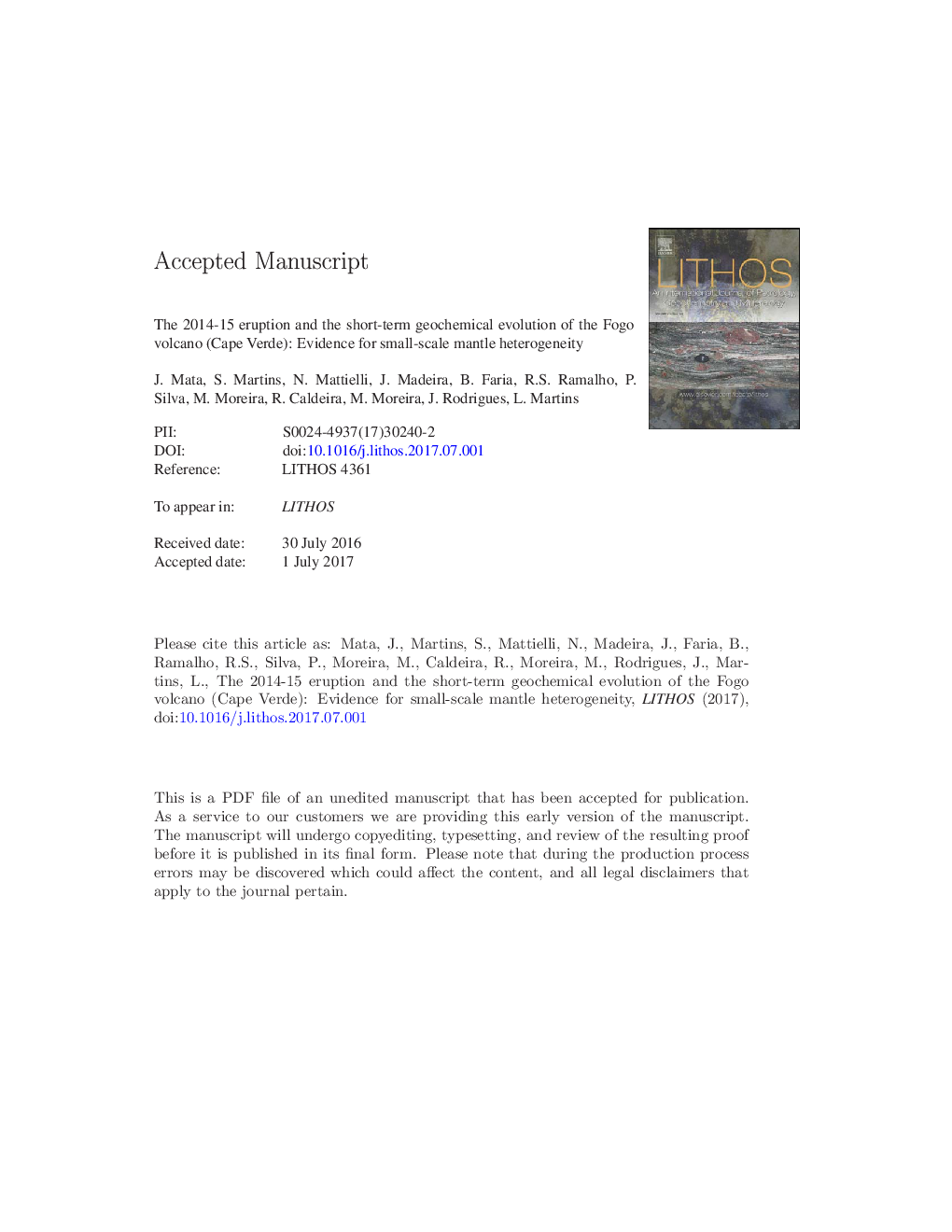| Article ID | Journal | Published Year | Pages | File Type |
|---|---|---|---|---|
| 5784003 | Lithos | 2017 | 56 Pages |
Abstract
The magmas erupted in 2014 are alkaline (up to 23.4% and 0.94% of normative ne and lc, respectively) with somewhat evolved compositions (Mg # < 56), ranging from tephrites to phonotephrites. The eruption of phonotephritic lavas preceded the effusion of tephritic ones. Lavas carried to the surface clinopyroxene and kaersutite phenocrysts and cognate megacrysts, which indicate that the main stages of magma evolution occurred in magma chambers most probably located at mantle depths (25.6 ± 5.5 km below sea level). This was followed by a shallower (< 1.5 km below sea level) and shorter (â 50 days) magma stagnation before the eruption. 2014 magmas have more unradiogenic Sr and more radiogenic Nd compositions than those of the previous 1951 and 1995 eruptions, which generally have less radiogenic Pb ratios. These isotopic differences - coming from quasi-coeval materials erupted almost in the same place - are remarkable and reflect the small-scale heterogeneity of the underlying mantle source. Moreover, they reflect the limited isotopic averaging of the source composition during partial melting events as well as the inefficient homogenization within the plumbing system when on route to the surface. The lid effect of an old and thick lithosphere is considered of utmost importance to the preservation of a significant part of source heterogeneity by erupted magmas. The decrease in the contribution of an enriched component to the Fogo magmas in the 2014 eruption marks a change on the volcano short-term evolution that was characterized by a progressive increase of the importance of such a component. Nb/U ratios of the 2014 lavas are similar, within 2Ï, to the mean value of OIB, but significantly lower than those reported for the 1995 and 1951 eruptions. This is considered to reflect the lack of significant mixing of the 2014 magmas with lithospheric melts, as opposed to what is here hypothesised for the two previous eruptions.
Related Topics
Physical Sciences and Engineering
Earth and Planetary Sciences
Geochemistry and Petrology
Authors
J. Mata, S. Martins, N. Mattielli, J. Madeira, B. Faria, R.S. Ramalho, P. Silva, M. Moreira, R. Caldeira, M. Moreira, J. Rodrigues, L. Martins,
